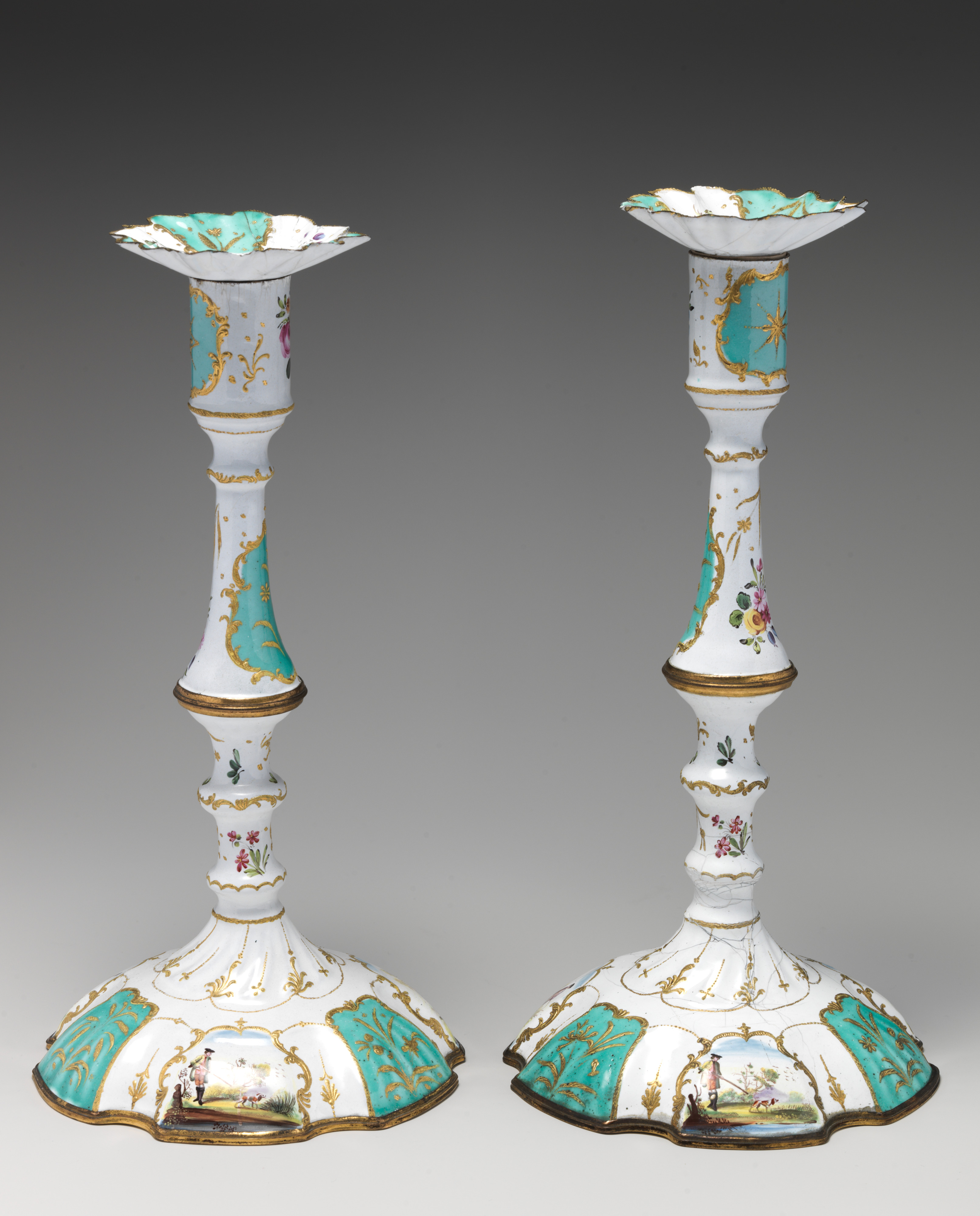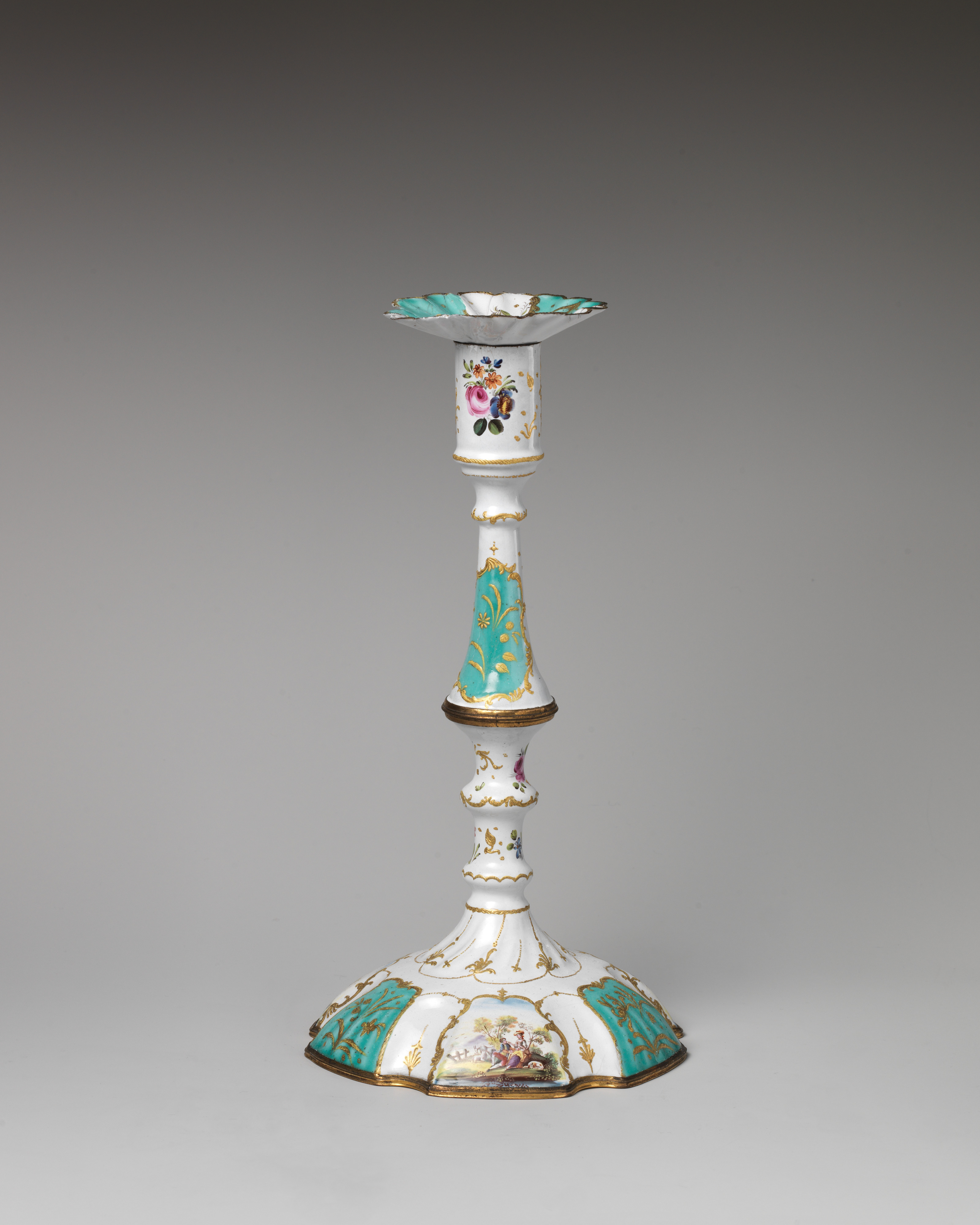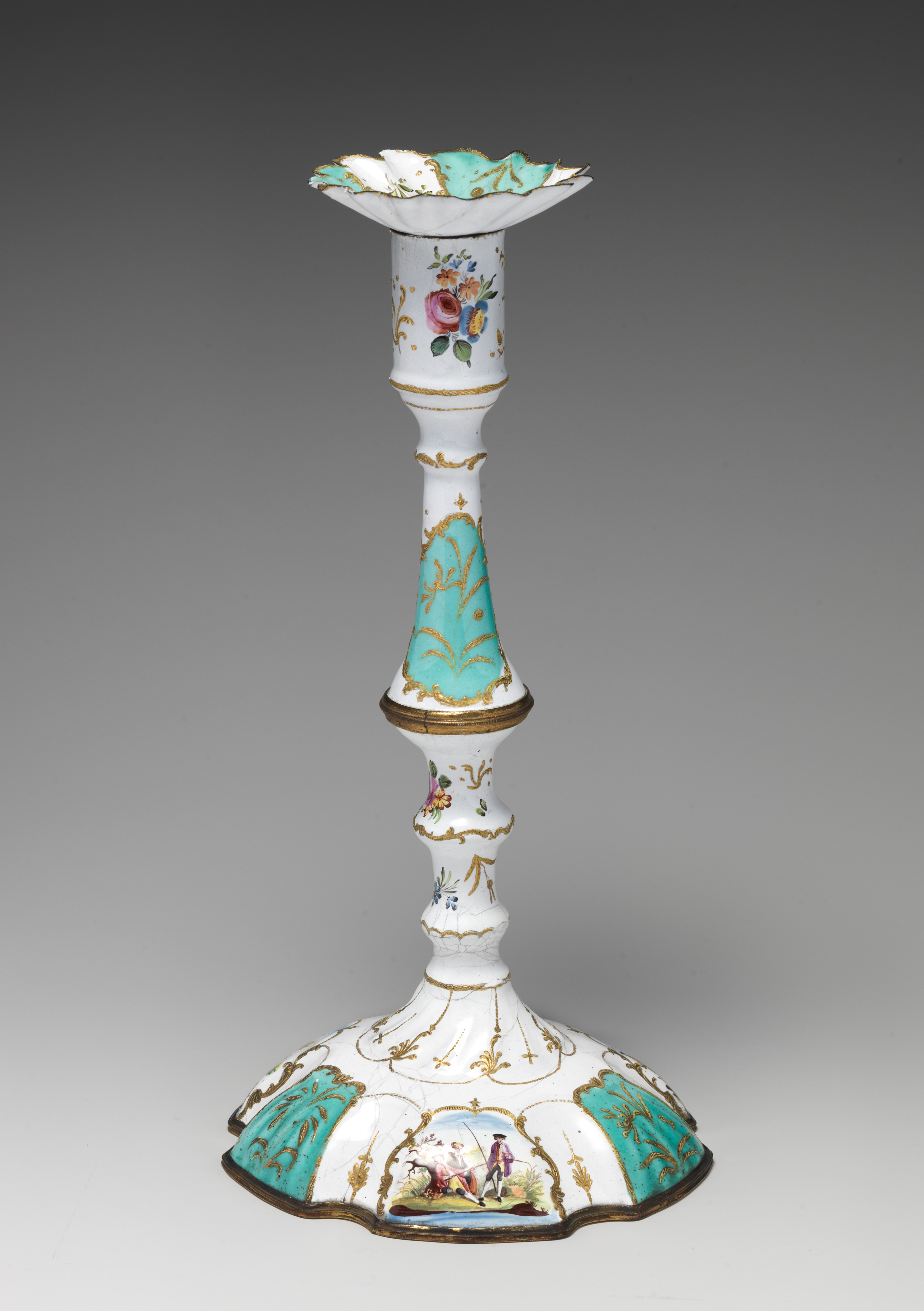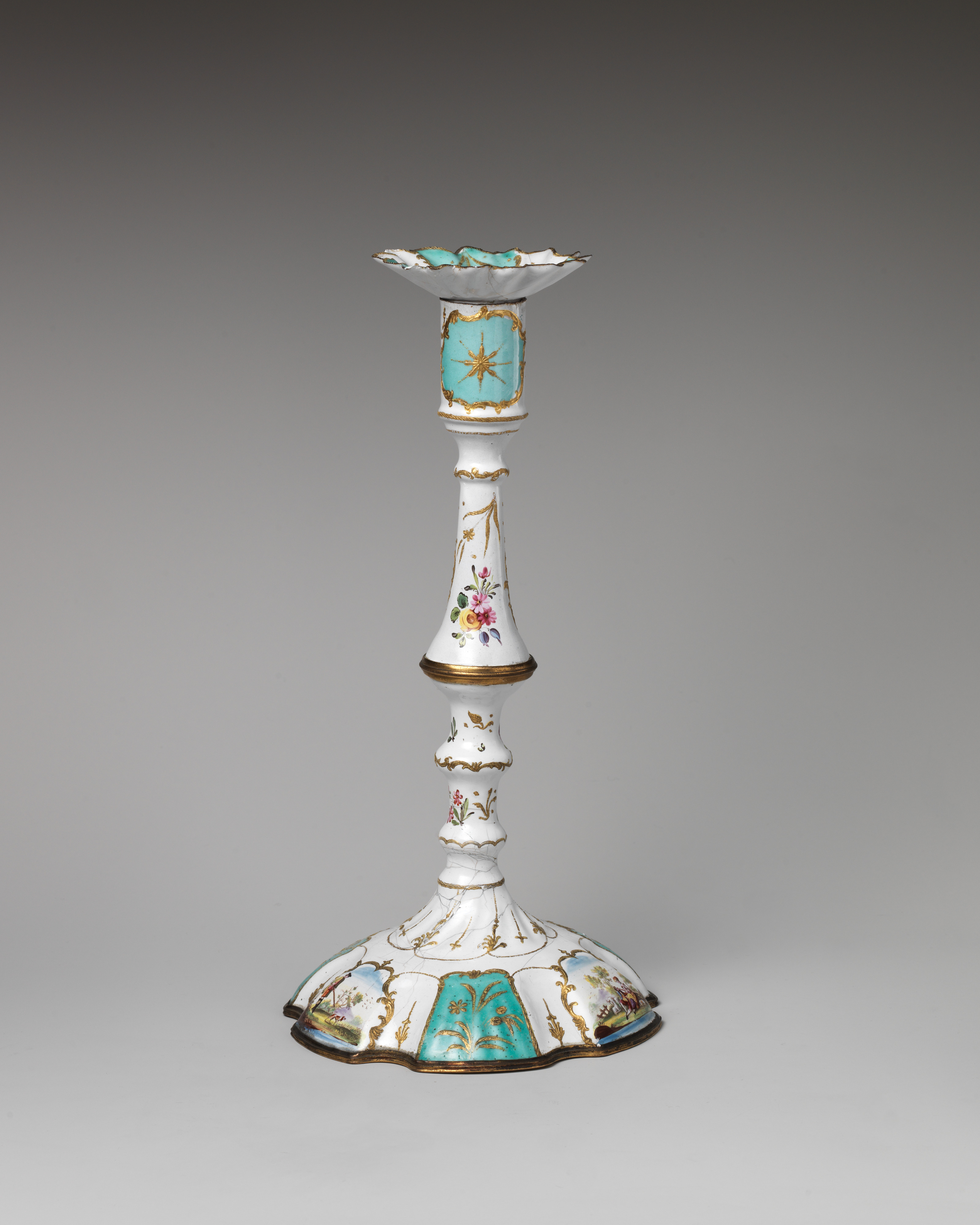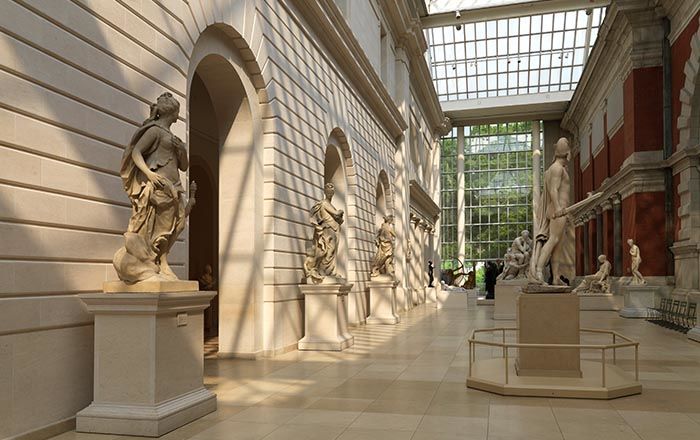Pair of candlesticks
Not on view
Two figural scenes adorn the base of each candlestick. One, depicting a couple in a pastoral setting, is derived from Pensant-ils au Raisin?, a 1747 painting by François Boucher, later engraved by Jacques Philippe Le Bas (one of these prints is housed in The Met’s collection (1970.522.2)). The enameller may have been familiar either with Le Bas’ print or with Robert Hancock’s design, known as Peeping Tom, adapted from Boucher’s original composition. The other scene on these candlesticks, depicting a hunter with his dog, is reproduced on plate 32 of Robert Sayer’s influential book of designs, The Ladies Amusement.
Candlesticks were sold alongside other luxurious trinkets, known as "toys," through which wealth and taste could be displayed. Some toys were functional, intended to store foodstuffs, cosmetic products, or snuff; others were intended for no purpose other than to delight. Some were made of precious metals, like gold or silver, and were sold at correspondingly high prices; others employed relatively inexpensive materials and were thus available to the expanding middle classes.
Enameled objects like this one, intended to imitate the lustrous quality of porcelain, were among the more affordable goods sold at toyshops across London and in fashionable English resort towns. Though often called "Battersea enamels" in common parlance (referring to the manufactory at York House, Battersea, operating only between 1753 and 1756), we rarely know exactly where individual pieces were made. The main centers of enamel production were in London, South Staffordshire (particularly in Bilston and Wednesbury), and Birmingham.
By the middle of the eighteenth century, technological innovations had made it possible to roll copper, instead of the far costlier gold, into very thin sheets. Powdered glass mixed with minerals (to determine the opacity and color of the enamel) would then be applied onto the copper sheets and fired at high temperatures. A design—whether a famous portrait, generic pastoral scene, or floral motif— could be painted on by hand or copied from an engraving through the newly invented process of transfer printing. Many enameled objects combined both methods of decoration and would be refired after the application of each new layer or color.
This image cannot be enlarged, viewed at full screen, or downloaded.
This artwork is meant to be viewed from right to left. Scroll left to view more.


